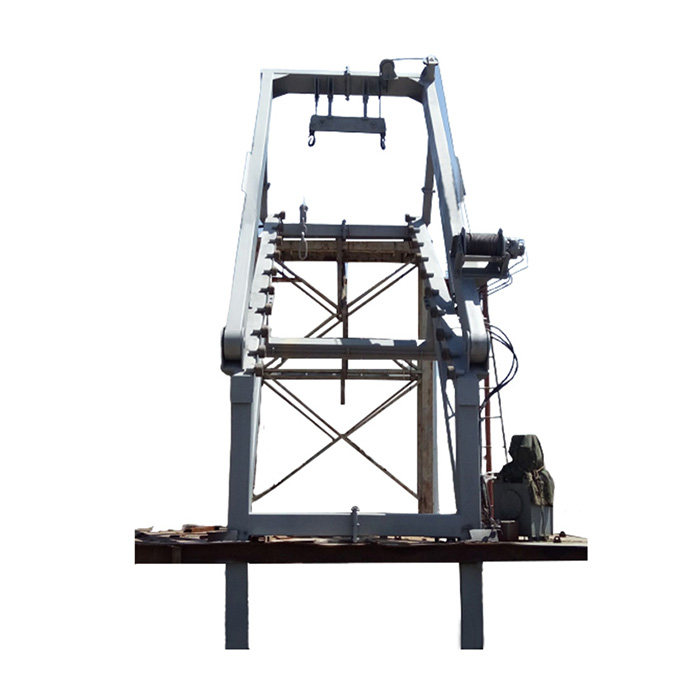The safety of crew and passengers aboard maritime vessels is paramount, and one of the critical components of maritime safety is the lifeboat launching system. These systems are designed to ensure that lifeboats can be quickly and safely deployed in the event of an emergency, providing a reliable means of escape and survival. This article delves into the various types of lifeboat launching systems, their components, and the regulations governing their use.

The Main Types of Lifeboat Launching Systems
1. Gravity Davits
Mechanism: Utilize gravity to lower the lifeboats.
Single Pivot Gravity Davit:
Description: The lifeboat is supported by davits with a single pivot point, allowing the boat to swing out and be lowered into the water.
Advantages: Simple design, reliable operation, and can be used without power.
Quadrantal Davit:
Description: Features a curved arm that moves the lifeboat outward and downward in a controlled arc.
Advantages: Smooth deployment path and compact design suitable for limited deck space.
2. Free-Fall Lifeboat Systems
Mechanism: The lifeboat slides off an inclined ramp into the water.
Description: Freefall lifeboats are launched from a considerable height, sliding down a ramp to enter the water quickly.
Advantages: Rapid deployment, reduces time spent on the ship during an emergency, and ensures the lifeboat is clear of the vessel.
3. Hydraulic Davits
Mechanism: Use hydraulic power to control the lowering and hoisting of lifeboats.
Description: Incorporate hydraulic cylinders and pumps to manage the movement of the lifeboats.
Advantages: Provides smooth and controlled operations, can handle heavier lifeboats, and allows precise positioning.
4. Mechanically Controlled Davits
Mechanism: Operated using mechanical gears and winches.
Description: These systems use manual or motor-driven winches and gears to lower and raise lifeboats.
Advantages: Reliable and can be operated manually if power is unavailable, providing an extra layer of safety.
5. Davit-Launched Lifeboats
Mechanism: The lifeboat is swung out over the side of the vessel before being lowered.
Description: Includes various types of davits (such as gravity and hydraulic) that can swing the lifeboat outboard before lowering it.
Advantages: Keeps the lifeboat clear of the vessel, minimizing the risk of damage during deployment.

Regulatory Standards Covering Lifeboat Launching Systems
1. International Maritime Organization (IMO)
SOLAS Convention: The International Convention for the Safety of Life at Sea (SOLAS) sets comprehensive standards for lifeboat launching systems, including design, testing, and maintenance requirements.
LSA Code: The Life-Saving Appliances (LSA) Code provides detailed specifications for lifeboat launching systems, ensuring they meet rigorous safety standards.
2. Classification Societies
Organizations such as Lloyd’s Register, Bureau Veritas, and the American Bureau of Shipping provide additional certification and inspection services to ensure compliance with international standards.
3. National Regulations
Individual countries may have their own regulations and standards that complement international guidelines, tailored to specific maritime operations within their jurisdiction.
Maintenance and Testing of Lifeboat Launching Systems
1. Importance of Maintenance and Testing
Regular maintenance and testing are not optional; they are lifesaving practices. By proactively identifying and addressing potential issues, these procedures ensure the lifeboat launching systems are in peak condition when needed most. A well-maintained and tested lifeboat launching system provides peace of mind for crews and passengers, knowing they have a reliable evacuation option in case of an emergency.
2. Maintenance
Regular Inspections: Lifeboat launching systems, including davits, winches, wires, hooks, and release mechanisms, undergo regular inspections according to a planned schedule. These inspections are typically weekly and monthly, as mandated by SOLAS.
Visual Checks: Inspectors look for signs of wear, corrosion, deformation, or any damage that could compromise the system’s operation. Lubrication of moving parts and ensuring proper alignment are also crucial maintenance tasks.
Record Keeping: Detailed records of all maintenance activities, including inspections, repairs, and replacements, are maintained onboard. This documentation helps ensure a complete service history and facilitates identification of any recurring issues.
3. Testing
Operational Tests: Lifeboat launching systems are not just inspected; they are also functionally tested regularly. These tests verify the davits’ ability to lower and raise the lifeboats at the required speeds under various loads, simulating real-world scenarios.
Release Gear Testing: The lifeboat release gear, which allows for quick detachment from the davit in an emergency, is rigorously tested. This ensures the simultaneous release of all hooks and proper functioning under load.
Free-Fall Lifeboat Testing: For certain types of lifeboats designed for rapid deployment, free-fall launch tests might be conducted periodically. These tests involve lowering the lifeboat with crew onboard a short distance to verify its functionality and crew readiness.
4. Frequency of Testing
The frequency of testing varies depending on the specific equipment and SOLAS regulations. Here’s a general guideline:
Weekly: Lifeboat winches and brakes are tested under light load.
Monthly: Lifeboats are lowered and raised under full load capacity.
Every 3 Months: Lifeboat release gear is functionally tested.
Every 6 Months: Free-fall lifeboat testing might be required (depending on the type).
Annual: A comprehensive operational test of the entire lifeboat launching system is conducted.

Conclusion
Understanding the various types of lifeboat launching systems and their components, along with the regulatory framework, ensures the maritime industry can maintain reliable and effective emergency response measures. Regular maintenance, testing, and training are essential practices that uphold the integrity of marine lifeboat launching systems, ultimately safeguarding lives at sea.
